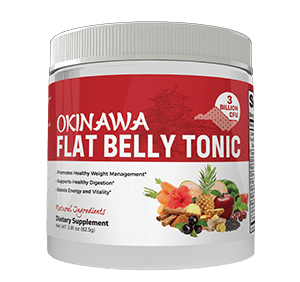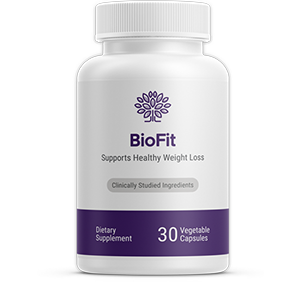LynnDonn 26/08/2021

Natural remedies for perimenopause and menopause symptoms.
By LynnDonn 17 Comments
More and more women are seeking natural alternative treatments for symptoms of menopause, for a variety of reasons. Perhaps the most compelling reason for many is the association between conventional hormone replacement therapy and a number of serious health risks, including an increased risk of breast cancer and blood clots, although the link has by no means been proven, and the issue is currently the subject of serious debate among women's health experts. Many women have experienced unpleasant side effects resulting from conventional HRT, including nausea, headaches and vaginal bleeding. Many women simply feel apprehensive at the thought of taking drugs which have been manufactured synthetically.
The whole notion of returning to old fashioned herbal treatments and folk remedies has a certain comforting, romantic appeal. Some of the herbal medicines which are being rediscovered have been used to treat a range of ailments for literally thousands of years. There is a commonly held belief that medicines derived from natural sources are necessarily free from the risk of negative side effects, harmful interactions and allergic reactions. This is simply not true. Whatever kind of medication you choose to take, it's essential that you fully understand how it works, what dosage level is appropriate for you, and what objective research has been done on its effectiveness and its potential hazards. Your doctor is the best person to provide you with professional, individual advice and attention. Information you find online and in women's health publications is a useful supplement to your doctor's advice, and it's wise to read as widely as you can to get an overall picture of the issues. Your health is the most important thing you have, and while you are free to make your own choices about treating menopause symptoms, it's vital that you make these choices with your eyes open.
Most experts believe that all of the common symptoms of menopause are caused by the dramatic decline and fluctuations in the body's levels of estrogen and to some extent progesterone, and the imbalance between them. Approaches to alleviating symptoms generally focus around restoring these hormone levels. Natural treatments are typically made from extracts of plants containing substances which are very similar to the estrogen and/or progesterone produced by the ovaries. The effectiveness of these treatments relies on the assumption that these phytoestrogens and plant progesterones have a similar effect in the body to the body's own natural hormones. Some herbal treatments work by stimulating glands to produce natural hormones more effectively, rather than restoring the hormones artificially.
Another approach is to treat each symptom individually. There is a range of natural treatments which focus specifically on alleviating common symptoms such as hot flashes, depression, libido problems, vaginal dryness and fatigue.
Estrogen treatments.
Soy
By far the richest source of phytoestrogens (sometimes called 'isoflavones') is soybeans, and foods made from soy extracts. Soy can be consumed in the form of tofu, soy cheese, meat substitute products such as soy burgers, breads and muffins made with soy flour, and soy drinks, sometimes known as 'soy milk'. Some studies have shown that consuming soy beverages or breads made with soy flour twice daily can reduce the severity or the number of hot flashes, but results have been inconclusive and inconsistent. Soy powders and pills contain much higher levels of phytoestrogens than soy foods, and may have a more significant effect in alleviating menopause symptoms than soy foods, but little is known about the potential hazards. Consuming soy extracts and soy foods may have a range of other health benefits, including reducing the risk of osteoporosis, cancer and heart disease, and lowering cholesterol. Some studies suggest that phytoestrogens may actually help to reduce the risk of breast cancer by blocking the overproduction of natural estrogen in the body.
Herbs containing phytoestrogens
Red clover has been used in Asia for thousands of years to treat skin conditions, asthma, bronchitis, kidney stones, joint disorders and breast inflammation. It is thought to work by improving circulation and stimulating urine and mucous production, or 'purifying the blood'. Red clover has been recently discovered to contain high levels of phytoestrogens, and its usefulness in the treatment of menopause symptoms is being investigated. Some studies have shown the herb to be very effective in reducing hot flashes and improving bone density and strength, while others have been inconclusive.
Dong Quai is an important herb used in Chinese medicine, and has been used to treat PMS, menstrual irregularities and menopause symptoms for thousands of years, although its effectiveness has yet to be clinically verified by Western health practitioners. It is also believed to dilate blood vessels, and is used to treat high blood pressure and circulatory problems.
Black Cohosh
Black cohosh is commonly believed to contain phytoestrogens, although clinical studies to confirm this have been far from conclusive. It is a perennial plant native to North America, and is also known as black snakeroot, bugbane, rattleroot and macrotys. The plant has a long history of usefulness as a medicinal treatment, first by Native American people and more recently by alternative health practitioners, and has been used to treat a range of gynecological ailments including menopause symptoms, infertility, inflammation of the uterus and ovaries, and to induce lactation, bring on menstruation, and alleviate labor pains. It has also been used to treat rheumatism, fever, coughs and colds, hives and backache. Some studies have shown that taking pills made from black cohosh extract is very helpful in providing short term relief from a range of menopause symptoms including hot flashes, depression, mood swings and anxiety. However, little is known about the effects of taking the treatment in the long term, and some negative side effects have been reported, including headaches, stomach and gastric discomfort and weight gain.
Maca
Peruvian Maca root is believed to work by stimulating glands in the body to produce their own estrogen and testosterone. Maca has been cultivated in the Andes region for perhaps thousands of years, and has been used as a treatment to increase energy, enhance libido and increase fertility. Maca root is claimed to provide a range of benefits, including alleviating PMS symptoms, reducing depression and stress, increasing athletic ability and creating a general sense of well being. It is also claimed to be effective in treating a wide range of menopausal symptoms, including mood swings, depression, irritability, anxiety, fatigue, hot flashes, reduced libido, sleep disturbances and breast tenderness. Objective clinical research into the effectiveness and the potential hazards of taking Maca root supplements is very scant.
Progesterone treatments.
An alternative view of the causes of menopause symptoms places more emphasis on the role of progesterone, and the imbalance between progesterone and estrogen. 'Estrogen dominance' is a recently identified syndrome, and is believed by a small number of doctors to be the cause of severe PMS and menstrual problems in early adulthood, and a range of severe symptoms as menopause approaches. Advocates of progesterone treatments believe them to be free from the health risks and side effects associated with estrogen based treatments.
Natural progesterone cream
Natural progesterone creams usually contain extracts from Mexican wild yam, which contains a substance which is believed to be similar to the progesterone produced in the body. The creams are applied to the parts of the body where the skin is thinner, such as the breasts, inner thighs, inner forearms or stomach, and are believed to pass through the skin and circulate through the body. Many women have found natural progesterone creams to be very effective in treating menopause symptoms, but there is no evidence to show that the creams lower the risk of breast and uterine cancer, or are free from the risk of side effects as is sometimes claimed.
Chaste tree berry
Chaste tree berry, sometimes known as Chasteberry or Vitex agnus castus has been used since ancient Greek times to treat a range of ailments. It is believed to stimulate the production of progesterone, and has been shown to be very effective in alleviating severe PMS and a range of menopausal symptoms
Natural remedies for perimenopause and menopause symptoms.
More and more women are seeking natural alternative treatments for symptoms of menopause, for a variety of reasons. Perhaps the most compelling reason for many is the association between conventional hormone replacement therapy and a number of serious health risks, including an increased risk of breast cancer and blood clots, although the link has by no means been proven, and the issue is currently the subject of serious debate among women's health experts. Many women have experienced unpleasant side effects resulting from conventional HRT, including nausea, headaches and vaginal bleeding. Many women simply feel apprehensive at the thought of taking drugs which have been manufactured synthetically.
The whole notion of returning to old fashioned herbal treatments and folk remedies has a certain comforting, romantic appeal. Some of the herbal medicines which are being rediscovered have been used to treat a range of ailments for literally thousands of years. There is a commonly held belief that medicines derived from natural sources are necessarily free from the risk of negative side effects, harmful interactions and allergic reactions. This is simply not true. Whatever kind of medication you choose to take, it's essential that you fully understand how it works, what dosage level is appropriate for you, and what objective research has been done on its effectiveness and its potential hazards. Your doctor is the best person to provide you with professional, individual advice and attention. Information you find online and in women's health publications is a useful supplement to your doctor's advice, and it's wise to read as widely as you can to get an overall picture of the issues. Your health is the most important thing you have, and while you are free to make your own choices about treating menopause symptoms, it's vital that you make these choices with your eyes open.
Most experts believe that all of the common symptoms of menopause are caused by the dramatic decline and fluctuations in the body's levels of estrogen and to some extent progesterone, and the imbalance between them. Approaches to alleviating symptoms generally focus around restoring these hormone levels. Natural treatments are typically made from extracts of plants containing substances which are very similar to the estrogen and/or progesterone produced by the ovaries. The effectiveness of these treatments relies on the assumption that these phytoestrogens and plant progesterones have a similar effect in the body to the body's own natural hormones. Some herbal treatments work by stimulating glands to produce natural hormones more effectively, rather than restoring the hormones artificially.
Another approach is to treat each symptom individually. There is a range of natural treatments which focus specifically on alleviating common symptoms such as hot flashes, depression, libido problems, vaginal dryness and fatigue.
Estrogen treatments.
Soy
By far the richest source of phytoestrogens (sometimes called 'isoflavones') is soybeans, and foods made from soy extracts. Soy can be consumed in the form of tofu, soy cheese, meat substitute products such as soy burgers, breads and muffins made with soy flour, and soy drinks, sometimes known as 'soy milk'. Some studies have shown that consuming soy beverages or breads made with soy flour twice daily can reduce the severity or the number of hot flashes, but results have been inconclusive and inconsistent. Soy powders and pills contain much higher levels of phytoestrogens than soy foods, and may have a more significant effect in alleviating menopause symptoms than soy foods, but little is known about the potential hazards. Consuming soy extracts and soy foods may have a range of other health benefits, including reducing the risk of osteoporosis, cancer and heart disease, and lowering cholesterol. Some studies suggest that phytoestrogens may actually help to reduce the risk of breast cancer by blocking the overproduction of natural estrogen in the body.
Herbs containing phytoestrogens
Red clover has been used in Asia for thousands of years to treat skin conditions, asthma, bronchitis, kidney stones, joint disorders and breast inflammation. It is thought to work by improving circulation and stimulating urine and mucous production, or 'purifying the blood'. Red clover has been recently discovered to contain high levels of phytoestrogens, and its usefulness in the treatment of menopause symptoms is being investigated. Some studies have shown the herb to be very effective in reducing hot flashes and improving bone density and strength, while others have been inconclusive.
Dong Quai is an important herb used in Chinese medicine, and has been used to treat PMS, menstrual irregularities and menopause symptoms for thousands of years, although its effectiveness has yet to be clinically verified by Western health practitioners. It is also believed to dilate blood vessels, and is used to treat high blood pressure and circulatory problems.
Black Cohosh
Black cohosh is commonly believed to contain phytoestrogens, although clinical studies to confirm this have been far from conclusive. It is a perennial plant native to North America, and is also known as black snakeroot, bugbane, rattleroot and macrotys. The plant has a long history of usefulness as a medicinal treatment, first by Native American people and more recently by alternative health practitioners, and has been used to treat a range of gynecological ailments including menopause symptoms, infertility, inflammation of the uterus and ovaries, and to induce lactation, bring on menstruation, and alleviate labor pains. It has also been used to treat rheumatism, fever, coughs and colds, hives and backache. Some studies have shown that taking pills made from black cohosh extract is very helpful in providing short term relief from a range of menopause symptoms including hot flashes, depression, mood swings and anxiety. However, little is known about the effects of taking the treatment in the long term, and some negative side effects have been reported, including headaches, stomach and gastric discomfort and weight gain.
Maca
Peruvian Maca root is believed to work by stimulating glands in the body to produce their own estrogen and testosterone. Maca has been cultivated in the Andes region for perhaps thousands of years, and has been used as a treatment to increase energy, enhance libido and increase fertility. Maca root is claimed to provide a range of benefits, including alleviating PMS symptoms, reducing depression and stress, increasing athletic ability and creating a general sense of well being. It is also claimed to be effective in treating a wide range of menopausal symptoms, including mood swings, depression, irritability, anxiety, fatigue, hot flashes, reduced libido, sleep disturbances and breast tenderness. Objective clinical research into the effectiveness and the potential hazards of taking Maca root supplements is very scant.
Progesterone treatments.
An alternative view of the causes of menopause symptoms places more emphasis on the role of progesterone, and the imbalance between progesterone and estrogen. 'Estrogen dominance' is a recently identified syndrome, and is believed by a small number of doctors to be the cause of severe PMS and menstrual problems in early adulthood, and a range of severe symptoms as menopause approaches. Advocates of progesterone treatments believe them to be free from the health risks and side effects associated with estrogen based treatments.
Natural progesterone cream
Natural progesterone creams usually contain extracts from Mexican wild yam, which contains a substance which is believed to be similar to the progesterone produced in the body. The creams are applied to the parts of the body where the skin is thinner, such as the breasts, inner thighs, inner forearms or stomach, and are believed to pass through the skin and circulate through the body. Many women have found natural progesterone creams to be very effective in treating menopause symptoms, but there is no evidence to show that the creams lower the risk of breast and uterine cancer, or are free from the risk of side effects as is sometimes claimed.
Latest Posts
Recent Posts


Don't waste your time to search around, we have what you want. The greatest software
best solutions to fit your business needs. Your business is our business your satisfaction is our goal.
Copyright © 2021 All rights reserved.
Disclaimer | Developed by vinasoftplus







